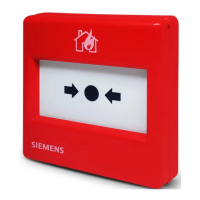16
fMRI User Guide
4.8 Identifying RF interference
4.8.1 RF Noise tests
Please ask your local service engineer for details on how to run RF noise tests. Noise tests must be performed
with the head coil and the table in either the home position or with the table positioned at its farthest end (head
coil outside the bore). No phantom is necessary for this test. With the table positioned outside the bore, the test
can be run only from the Service menu, with the Adjustments in Service mode. It is critical not to position the
head coils inside the bore for these tests because of the Faraday shield in the magnet. This shield reduces the
noise in the room from contaminating the images. If the head coil is positioned inside the bore, then one can get
clean noise tests despite noise being present in the room. The same noise can then contaminate images once a
patient is positioned on the table as the patient’s body can act as an antenna and carry the noise inside the bore,
reducing the effectiveness of the shield.
First, perform a baseline noise test without any external devices in the scanner room. Repeat the test 3 times.
This data can serve as a reference data set. The noise test should be repeated after each new device is installed
within the scanner room. Starting from a room with no external peripheral devices, install each peripheral one at
a time, and run noise tests after each device is installed.
Figure 6. RF noise.
A typical RF noise artifact will appear as a bright line in the image. This pattern indicates that the RF noise
is at a specific frequency. Such noise is easy to notice in an image as it is readily visible as an artifact. There
may also be white noise (broadband noise) introduced by the peripherals, which will not appear as a distinct
pattern, but will increase the overall level of the noise, and if it is high enough, can saturate the signal intensity
in the image. This noise can go undetected if one only performs a visual inspection of the images. Therefore,
in addition to visually analyzing the images, it is good practice to look at the mean intensities of the noise. This
can be done by loading the images from the noise test series into the “Mean Curve”, drawing a large ROI in the
image, and plotting the intensities through the image series. An example is shown in Figure 6. In addition to
the spikes that are observed in the plot, which indicate a frequency-specific noise, the mean intensity across
the images (~100 in the example in Figure 6, which is normal) is also important as an indicator of the level of
white noise. In the noise test, there may be no distinct noise pattern observed in the images, but the mean
noise level may be much elevated compared to the baseline (e.g. ~ 1000). Usually, the Mean Curve plot will
also show a somewhat linear variation in the noise across the images, which is mostly a characteristic of the
coil, and is not consequential, unless the gradient is very large.

